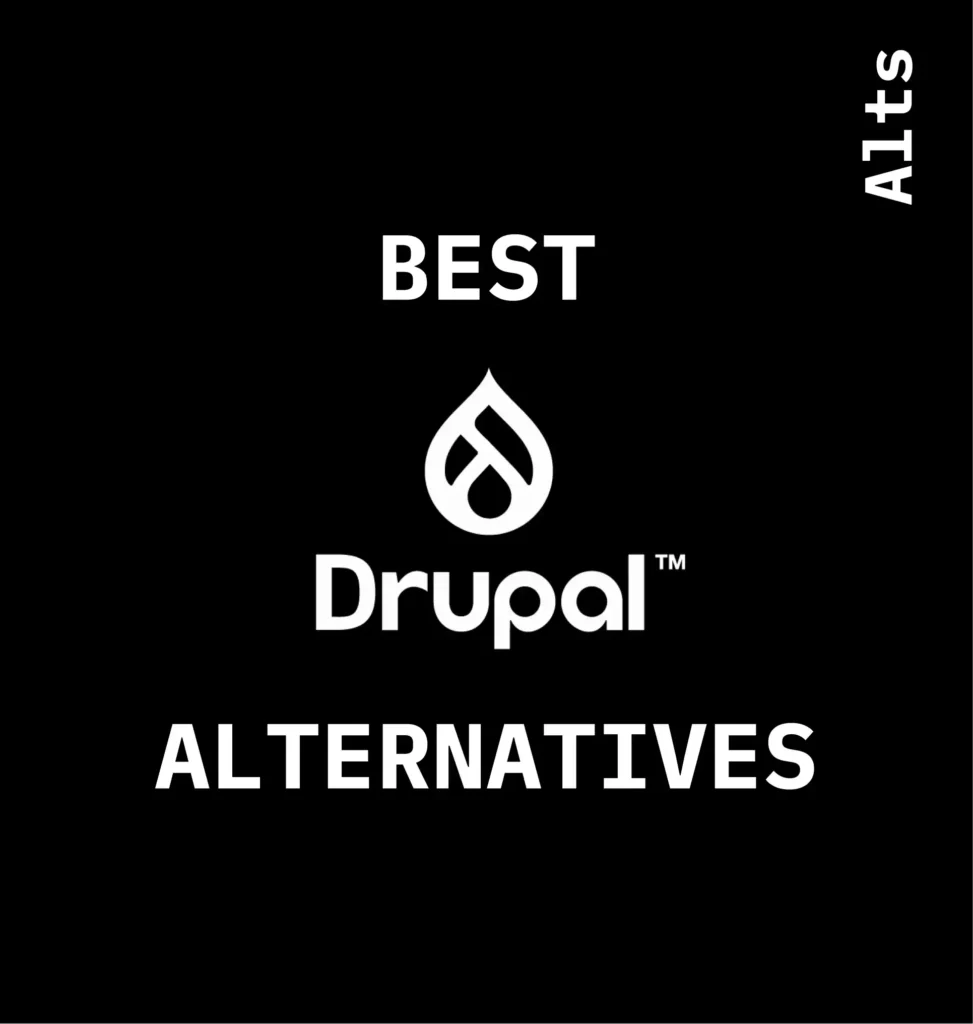
In 2024, Drupal is not the only CMS to consider.
Perhaps it is time to look at the alternatives to Drupal. Or, at least size-up the competition.
Each of these platforms offer similar features to Drupal, including customizability and scalability, while also each providing unique benefits to those considering Drupal in 2024, or to those looking to leave the Drupal ecosystem for a better alternative.
How we got here: a short history of Drupal
The first version of Drupal released in 2001 by software engineer Dries Buytaert, based on the PHP scripting language, and provided pretty basic features. Over the years, Drupal has been continuously improved to add more features, including support for new technologies and frameworks, increased security, and better usability.
As Drupal has evolved, it has been difficult for some Drupal users to keep up with all the platform, and most have not considered alternative CMS options for several years.
Drupal isn’t always the best choice for everyone’s needs — it can be difficult to learn and challenging to maintain over time. Explore some alternatives, so you can make an informed decision when choosing your CMS platform. And, f you are assessing whether to upgrade or migrate away from Drupal, decide if that’s the right choice for your organization.
Leading Alternatives to Drupal in 2024
So, let’s take a look at the leading alternatives to Drupal. All these platforms have their own unique strengths which may make them suitable options depending on your individual requirements.
1. WordPress

WordPress has become almost synonymous with web development, today, thanks largely due its wide range of customizability and ease of learning.
We unabashedly love WordPress.
An open-source content management system that, in 2024, proudly powers over 40% of the websites on the internet.
“A viable alternative to Drupal is WordPress.” offers Reddit user Donjoyyojnas. “WordPress is widely used for its simplicity.”
WordPress easy to manage content with and offers thousands of free and premium themes, plugins, and tools to make the CMS do exactly what your team needs. It’s highly customizable and can be used for small business websites, portfolios, and eCommerce stores.

What makes WordPress stand out from Drupal is its user-friendly development model. Using one of the many excellent WordPress page builders, you can drag and drop development with no-code, and build a unique, adaptive, and programmatic website with large content-sets.
Anyone on your team can create and customize pages quickly. The platform also offers hundreds of integrations with popular third-party services like Salesforce, Mailchimp, and Google Analytics. Plus, everyone loves how WordPress offers support forums where you can get help if needed; a huge community of WordPress developers, engineers, and educators all cooperating to make this open source project successful; and the migration from Drupal to WordPress as easy as possible.
Everyone likes WordPress because it is incredibly user friendly and versatile. With it, organizations can create beautiful websites without having to write any code at all.

WordPress is easy to install, set up and manage from one dashboard, with a range of free and premium themes available for customizing your site’s look. The platform also provides powerful plugins that can be used to extend functionality further still – from eCommerce tools like WooCommerce, membership plugins like Memberful, and marketing tools.
WordPress offers thousands of plugins developed by third party developers which can be used for a variety of purposes such as marketing, security enhancements or even adding new features like chatbots or social media integration into your website.
In 2024, WordPress is the leading alternative to Drupal. For unique functionality, larger and more complex needs, WordPress is likely the best alternative.
For organizations who have existing content sets, hundreds of posts or pages, and need to develop a modern responsive website to serve this content, WordPress is the leading choice.
If your organization is looking for more simplicity, or perhaps has a history with the WordPress platform, then let’s explore some other options.
2. Webflow

Folks love using Webflow, because it is a simple and intuitive way to create and design stunning websites. The platform is easy to use and it’s great for those who want to quickly create a website without having to learn complex coding.
Webflow is a visual website design and hosting platform designed to enable users to create responsive websites quickly and easily. The platform was founded in 2013 by Vlad Magdalin, Sergie Magdalin, and Bryant Chou.
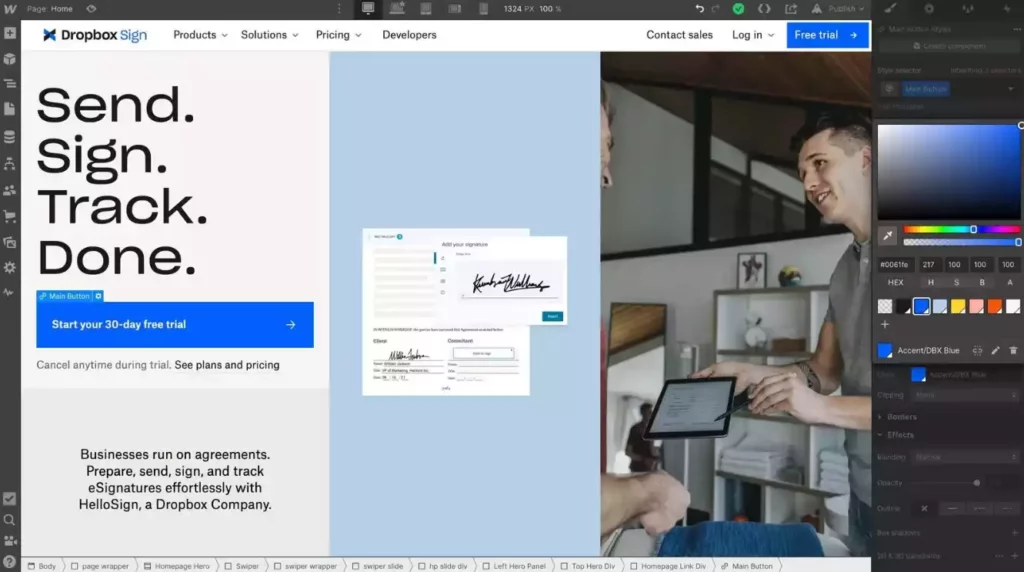
The first version of the platform was released in May 2013 and it allowed users to create websites without any code. Users could simply drag-and-drop elements onto their page, and then customize them as necessary. The platform was designed to be as intuitive and user-friendly as possible, so that novice and experienced users alike could build their own custom websites.
In late 2014, Webflow released their first version of dynamic content, allowing users to easily add dynamic content to their websites without needing to learn how to code.
Since launching, the platform has continued to evolve and innovate. In 2015, Webflow released a feature to let users convert their designs into HTML and CSS, allowing them to host their websites on their own servers. The year after, Webflow added a feature that made it easy for users to create ecommerce sites.
Typically, Webflow is most popular with:
- Startups and new companies
- Smaller digital agencies
- Photographers or other creatives
- Designers with little programming knowledge
- Marketing managers

The platform continues to be improved every year, and it now has a number of features designed to make web design easier and more accessible.
Webflow is quickly becoming one of the most popular alternatives to Drupal.
If your organization needs an alternative to Drupal and your primary concern is simplicity, and hands-off server management, then Webflow is a strong contender. Building a basic website for your organization, perhaps with a handful of pages and a blog, is easiest with Webflow, out of all the leading alternatives.
If, on the other hand, your organization does need some more customization, and you have a technically capable team, then let’s take a look at some of the leading Drupal alternatives that might better suit your needs.
3. CraftCMS
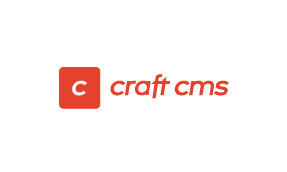
Craft CMS is one of the more popular open source content management systems for web developers today, thanks to its customizability and flexibility. Similar to WordPress, but altogether simpler, Craft CMS is a fresh alternative to Drupal in 2024.
Some developers just love CraftCMS. It’s also easy to use with intuitive navigation tools and a vast library of plugins from third-party providers that extend functionality further still.

Craft is touted as one of the most powerful and user-friendly open source publishing platforms on offer today with its range of customizable templates and modules making it “ideal for creating complex websites quickly.”
Craft is a content management system that provides everything developers need, while also being secure and supported. Compared to Drupal, this sounds fairly appealing to most organizations.
It has integration capabilities with marketing tools such as Salesforce and Mailchimp, localization services for an unlimited number of sites in multiple languages, an internationalized admin panel translated into 25 languages, authors’ ascend feature to give them a user-friendly authoring experience, scalability to fit any business size or type from small portfolios to large multinational companies, and access to the worldwide Craft community for support.
If your organization demands simplicity, but also customizability, and your technical team prefers to develop in a more traditional way, then CraftCMS is a very good alternative to Drupal in 2024.

4. Joomla

Joomla is a popular open-source content management system designed for creating websites, online applications, and portals. It has been around since 2005 and is currently used by thousands of people and organizations. It is highly customizable and allows you to create unique and technical websites in a traditional development model.
It is written in the PHP programming language and can be used on any platform, including Windows, Mac, Linux, and other Unix-like systems. The Joomla CMS was first released in August of 2005, and is now one of the most widely-used content management systems in the world.
Joomla was created by a group of developers led by Andrew Eddie, who was inspired by the Mambo CMS platform. He wanted to create an open source system that was more user-friendly and extensible than Mambo. Eddie worked with developer Brian Teeman to create the initial version of Joomla, which was released as 1.0.
Since the original release, Joomla has undergone several major revisions, each with new features and improvements to existing features. Joomla has also added several forms of extensibility, such as modules and plugins, allowing users to customize their websites to suit their needs.
Joomla 4, released just recently, has some new features, but has left some wondering about the future of the project. In most recent years, our engineers are most exposed to Joomla exporting content, and managing content and website migration from Joomla to WordPress and helping organizations handle the complex upgrade process to Joomla 4.
Joomla has several advantages over Drupal, including a more intuitive user interface, better template control, and an extensive range of built-in modules for enhanced customization. Additionally, it is marketing-friendly, supports multiple languages, and offers a wide selection of templates.
5. October CMS
OctoberCMS is a powerful open-source platform that has been steadily growing in popularity since its launch back in 2014.

October CMS is an open-source content management system that was engineered to be easy for developers and users. It is built on Laravel, the best PHP framework available, and includes all of the necessary tools and classes to create amazing websites.
Its easy-to-use drag & drop interface makes creating complex websites quick and intuitive, while the ‘theme engine’ feature allows users to quickly switch between different designs without having to start from scratch each time you need an update!
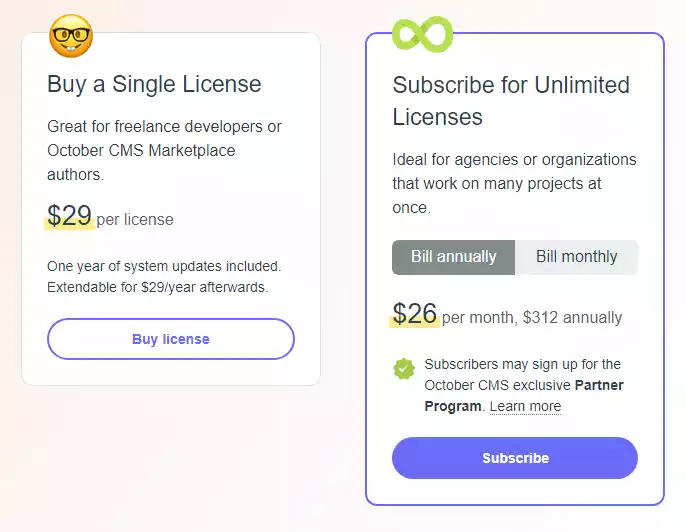
In early 2024, OctoberCMS reports over 325,000 websites built with the CMS to date.
“We moved the component-based RAD (rapid application development) concept to the web and implemented it as a flat-file CMS.” explains Alexey Bobkov, co-founder of October CMS. “The configuration section of October CMS pages uses the INI format. The INI format is an ancient technology; I believe it’s at least 30 years old. Thus, we took several really old ideas and mixed them with the best and newest technology in the PHP world – Laravel.”
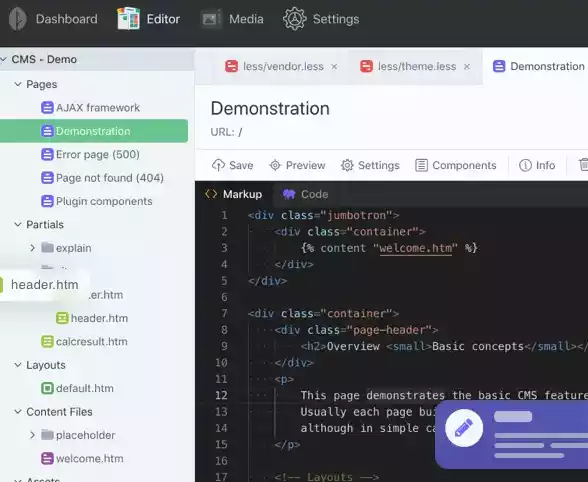
October CMS allows developers to build pages quickly with components and its simple template engine (Twig). The platform also offers a code editor, compatibility with Composer package manager, asset combiner for reduced page load times/server traffic, multisite feature for multiple languages support as well as Tailor – a tool which automatically creates content types from YAML files.
“October CMS is perfect for website and web application developers familiar with Laravel.” offers Bobkov. “If you have web development projects with tight deadlines and a lot of custom requirements, October CMS is the best fit.”
If your organization is looking for an alternative to Drupal with a modern approach to page building, and your technical team is familiar with Laravel, then OctoberCMS might be the best alternative for you in 2024.
6. Adobe Experience Manager
Adobe Experience Manager, also known as AEM, is a comprehensive content management solution from Adobe. It is ideal for organizations wanting to deliver personalized customer experiences across all channels.
Having its roots in content management, AEM encompasses digital asset management, a full-featured CMS, and features for facilitating digital marketing and e-commerce.
In general, AEM allows organizations to manage their marketing content and assets more efficiently, and improves time-to-market by allowing marketers and IT to work together to design, manage, and optimize online customer experiences across many channels, brands, and inter-connected organizations.
Adobe’s platform offers an enterprise-level solution that surpasses typical content management by incorporating digital asset management and customer communication applications. Developed for large-scale organizations with complex demands, it provides a suite of tools designed to create and manage digital customer experiences across multiple channels, including web, mobile, and social.
Launched in 2012, AEM has gradually found market acceptance and is commonly deemed as a strong platform and great alternative to Drupal for larger organizations.
It is a part of the Adobe Marketing Cloud, which is a comprehensive suite of marketing solutions. A popular option among enterprises, AEM integrates well with other Adobe products, providing a consistent and connected experience.
Growing in popularity, there are some challenges for organizations who choose to go with AEM over Drupal, and some brands are leaving Adobe Experience Manager.
AEM utilizes a component-based framework for developing web pages. This means developers can create modular pieces of content, such as text, images, and video, and then reuse them across multiple pages or sites.
7. Ghost CMS
GhostCMS is a simplistic, versatile content management system that emphasizes clean, easy to use functionality and fast performance. It’s become a favorite amongst bloggers, news agencies, and podcasters thanks to its sharp focus on content generation and management.

In their own words, “Ghost is a powerful app for professional publishers to create, share, and grow a business around their content.” the team offers. “It comes with modern tools to build a website, publish content, send newsletters & offer paid subscriptions to members.”
Launched in 2013 after a successful Kickstarter campaign, Ghost was developed by John O’Nolan and Hannah Wolfe as a reaction to what they saw as the increasingly complex nature of WordPress, which they felt was becoming less focused on simple blog creation.
“I used WordPress when they launched years ago, because it was best then. But now came Ghost. I feel like WordPress has transformed themselves into Microsoft – it’s great thing…” explains Timo U. “Ghost is as elegant as iPhone. All what’s needed is there. Great UI, no extra fuss.”
Unlike other more feature-heavy CMS platforms, Ghost specifically targets writers, journalists, and publishers who are in need of a platform that places all emphasis on content creation and distribution. It’s an open-source Node.js CMS that can either be self-hosted for free or on the official hosting platform Ghost(pro), available for a monthly subscription fee.
The interface is simplified yet effective — an intuitive dashboard where you can see everything at a glance: your site’s traffic, engagement metrics (like your most popular pieces of content), your email newsletter metrics (open rates/click-through rates), your members’ data (free/paid) etc.
If your organization values content creation over anything else and needs a system that’s powerful yet simplistic enough not to interfere with this process, then Ghost might be the platform you’re looking for.
Which is right for your organization?

We have now explored several of the best alternatives to Drupal in 2024. Drupal is still a great platform that many organizations rely on — and if your organization’s needs did not fit into any of the above alternatives, consider continuing to use Drupal.
As discussed, however, each of these alternatives brings unique specific advantages that we believe may be better for certain organizations.
If your organization is contemplating Drupal in 2024, we recommend considering the features you are looking for, assessing your specific needs, and critically evaluating the pros and cons of each of these platforms.
We hope this guide was helpful in giving you a better understanding of each of the platforms, and that you walk away with a better understanding of when each might be right for your organization’s website. If you’re debating upgrading and thinking about Drupal 7 vs Drupal 8, perhaps an alternative is a better fit.
Best Drupal CMS alternative for SMBs

If your organization is a small or medium business and you’re looking for a powerful but easy to use content management system in 2024, then the best Drupal alternative would probably be WordPress. Not only does WordPress offer robust features and customizability, but it also has an incredibly user-friendly development model with drag and drop design capabilities that require no coding experience. Plus, WordPress also has thousands of free and premium themes, plugins, and integrations that make it ideal for creating small business websites quickly.
WordPress is incredibly popular for SMBs due to its ease of use, cost-effectiveness, and scalability. Plus, with quick response times and a large community of developers for support, it’s no wonder that WordPress continues to be the top platform choice for SMBs in 2024.
Most important considerations for SMBs:
- Ease of use
- Cost effectiveness
- Scalability
There’s a lot of reasons to like WordPress, and many SMBs depend on the platform. For largely informational websites, or what some would call “brochure websites”, where the content isn’t dynamic and doesn’t change often, this type of website is very easy to build and maintain with WordPress, and easily edited and updated by the owner or management team.
Best Drupal alternative for Publishers and Media
For publishers and media organizations looking for a CMS in 2024, the best Drupal alternative would probably be Webflow. We think Webflow makes it easy to create good-looking websites quickly and easily, while also allowing for custom coding to expand the reach of your website with more powerful tools. Because it is a visual page-building tool, there’s no need for users to have a deep understanding of coding languages.
For content-intensive, video-driven organizations, like online publishers, media companies, Youtubers, TV, and other media outlets, the choice is probably driven by the type of content your team works most with and likely with your overall budget/traffic volume/viewership/audience size.
Most important considerations for publishers:
- Comprehensive security
- Efficient user experience
- Supporting information architecture
- Dynamic web development options for in-depth customization
Broadly speaking, another great alternative to Drupal for media-intensive teams would be Craft CMS. Thanks to its unique features and customizability—which makes creating complex websites fast and intuitive, along with elements like drag & drop content editing so designing pages is easy—Craft makes it an ideal choice for publishers.
Best Drupal CMS alternative for Enterprise
If you’re looking for an alternative to Drupal for enterprise organizations in 2024, the choice is really wide open. We would suggest WordPress, or Craft CMS, Adobe Experience Manager, or any off this list of the best alternatives. For your organization, the choice likely depends on the type of website you’re trying to build, the talents of your technical team and in-house resources available to maintain it.
For mainstream enterprise organizations with thousands (if not millions) of users, complex websites, eCommerce stores or native mobile applications — WordPress and October CMS are great options. They are built on open source frameworks like PHP and MySQL, which require coding experience from developers.
Most important considerations for Enterprise organizations:
- Security and privacy framework
- Scalability, loading speeds and user experience
- Integrations with third party services
These content management systems are totally suitable for more complex projects that demand heavily customized features and user experiences for enterprise use cases. But again: this is largely dependent on your specific needs — consider your specific business requirements when selecting an alternative to Drupal in 2024.
For enterprises looking for a CMS in 2024, the right choice is going to depend on what they need their platform to do. Generally speaking, WordPress is probably one of the most suitable alternatives for enterprise organizations.
Best Drupal alternative for Higher Education
For higher education institutions—i.e., universities, colleges, and other educational organizations—we strongly recommend WordPress in 2024.
In 2024 we would suggest that higher education organizations look at WordPress as the best Drupal alternative. Not only is WordPress free and open-source, but there are also literally thousands of dynamic applications, plugins, themes and features available to college campuses for creating websites tailored to their needs.
Many of the best university website design use WordPress.
For many higher education organizations, we’d suggest taking the all-in-one approach that WordPress provides, by using an existing suite of apps and tools to get the job done—that is, without having to worry about dealing with multiple different technology providers.
Other popular alternatives to Drupal for Higher Education include:
- Adobe Experience Manager
- Sitecore
- Gatsby
- Joomla
- Typo3
- Headless solutions
Most important considerations for higher education organizations:
- Security & privacy
- Responsive design & accessibility for all devices
- Information architecture tools
- Event calendars and registration capabilities
WordPress leads the pack in terms of providing higher education organizations with both flexibility and affordability while remaining highly customizable.
Best Drupal alternative for Nonprofit and NGOs

No matter if your nonprofit is looking for a new website altogether and are already considering Drupal, or if your organization has an existing Drupal site, and you are exploring the best alternatives, we can’t suggest Drupal at all. If you take nothing away, just choose anything from this list, and our engineers believe your organization will be ahead.
If your nonprofit or NGO needs a new website designed from scratch, we would expect your engineers to recommend a great option, but always get a few different opinions.
For organizations that have existing content sets, hundreds of posts or pages, and need to develop a modern responsive website to serve this content, WordPress is likely the best choice. It has lots of powerful features that can be used to customize your website quickly and easily. Plus with its integration capabilities with marketing tool such as Salesforce and Mailchimp as well as multisite feature for multiple language support makes WordPress an attractive choice for nonprofit organizations.
As another great option, Joomla would also do the job very well when it comes to creating websites for nonprofit organization. More technical, and a little less popular, Joomla can be used to create and manage content with plug-ins, global configurations and customized profiles.
Webflow is usually the best for nonprofit organizations which need simple, minimal website design that can be published quickly. It allows users to easily build websites using numerous built-in features and capabilities. And, if your organization needs a really flexible and dynamic web publishing platform, but you don’t have the technical capability to deal with hosting or environments, then Webflow might just do the job very well.
Selection criteria:
In 2024, organizations demand a modern CMS. Client requests and items from discovery calls enabled us to focus on the most asked-for and wished-for features.
Our engineers noted the following as most important: structured content modeling, publication workflows, a headless API, fine-grained authorization, a structured rich-text editor with embeds, scheduled publication, notifications, content collections management, query builder, revision history, front-end page builder, a digital asset management system, internationalization, multi-site management, UI extension and webhooks. These features enable users to create better experiences for their customers and gain access to richer data insights.
- For an alternative to Drupal, look for a system that allows for structured content modelling, and most teams today prefer a headless API.
- Organizations need granular permissions to keep content teams on track and most demand structured rich-text editing and scheduled publication, and webhooks.
- When selecting a CMS, features such as capabilities for structured content modelling, publication workflows and access to a headless API are all important considerations to make.
- CMS platforms should offer extensive support for features such as notifications, content collections management, revision history and more in order to offer the best user experience possible.
